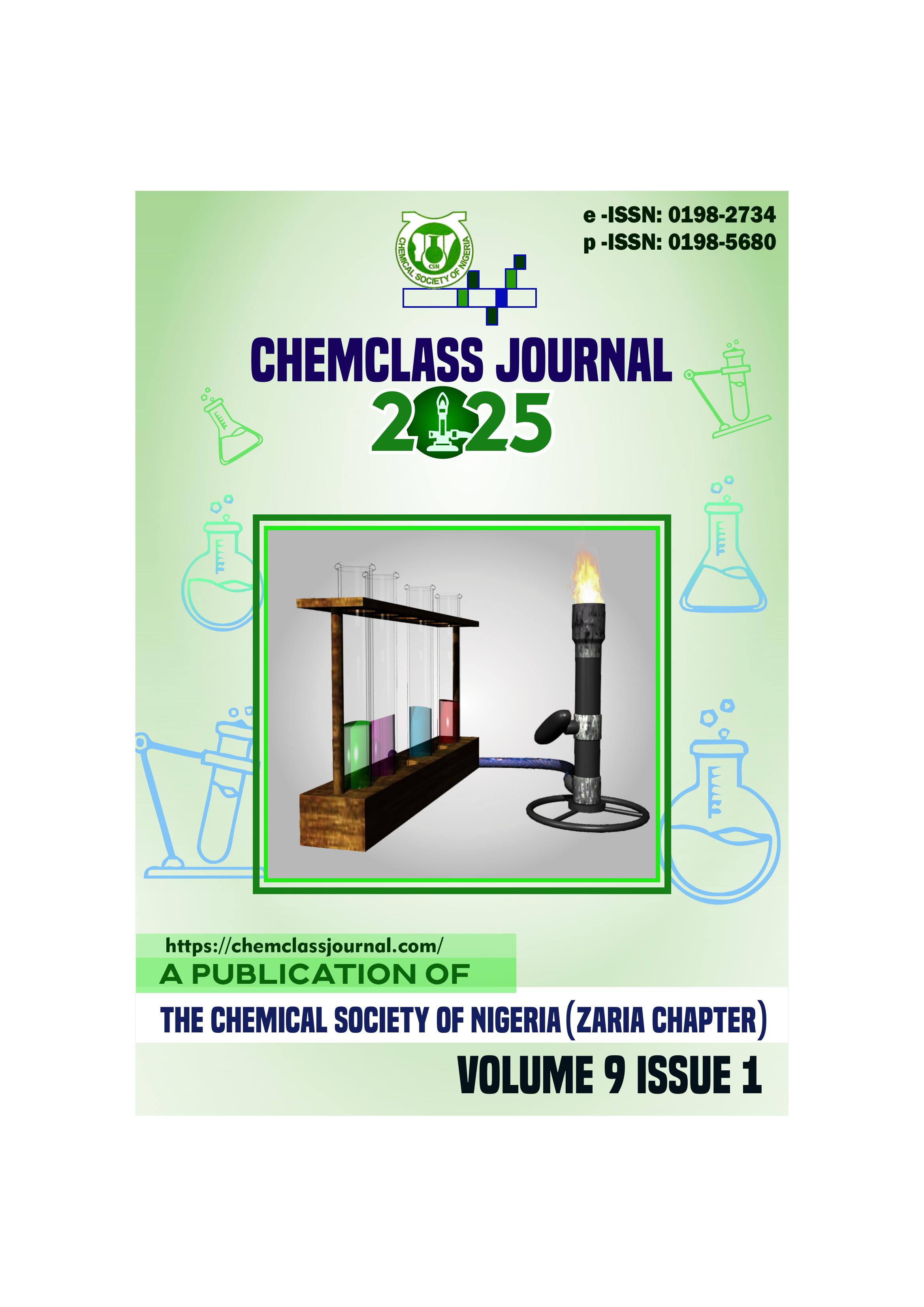Assessment of the Heavy Metals Concentration of Nkesa River, Rivers State, Nigeria
DOI:
https://doi.org/10.33003/Keywords:
Aggah , anthropogenic , atomic absorption spectrophotometer , biomagnification , heavy metals , Mgbede, Nkesa River and OkwuziAbstract
The growing concern on the safety of the inhabitants and users of the Nkesa River for different purposes,
ranging from consumption, domestic activities and others too numerous to mention, necessitated the
assessment of heavy metal concentrations of Nkesa River, Rivers State Nigeria. Concentrations of ten (10)
different metals namely: Copper, Zinc, Iron, Cadmium, Chromium, Lead, Mercury, Vanadium, Manganese
and Arsenic, from three (3) different sites of the river, namely: Mgbede, Okwuzi and Aggah, based on
proximity to effluents, were analyzed using the Varian AA240 Atomic Absorption Spectrophotometer
according to the method of APHA 1995 (American Public Health Association). The study aimed to access
the varied toxicity of these metals on both the inhabitants and other secondary users. Data obtained for
heavy metals analysis, showed that Iron, Lead and Mercury, were above the maximum contaminant levels
(MCLs) of USEPA (2010) and WHO (2004). The waters of Nkesa River is therefore, declared unfit for
direct human consumption, as this would lead to Fe, Pb and Hg related illnesses; therefore posing potential
risk of bio-magnification for inhabitants that depend on the river. It is therefore recommended that, an
urgent need to properly manage wastes in the cities and monitor anthropogenic activities, is of great
importance in order to ensure minimized effects on these parameters of Nkesa River. Sensitization should
be carried out, to educate the people on the dangers of its ingestion.





 ChemClass Journal
ChemClass Journal
